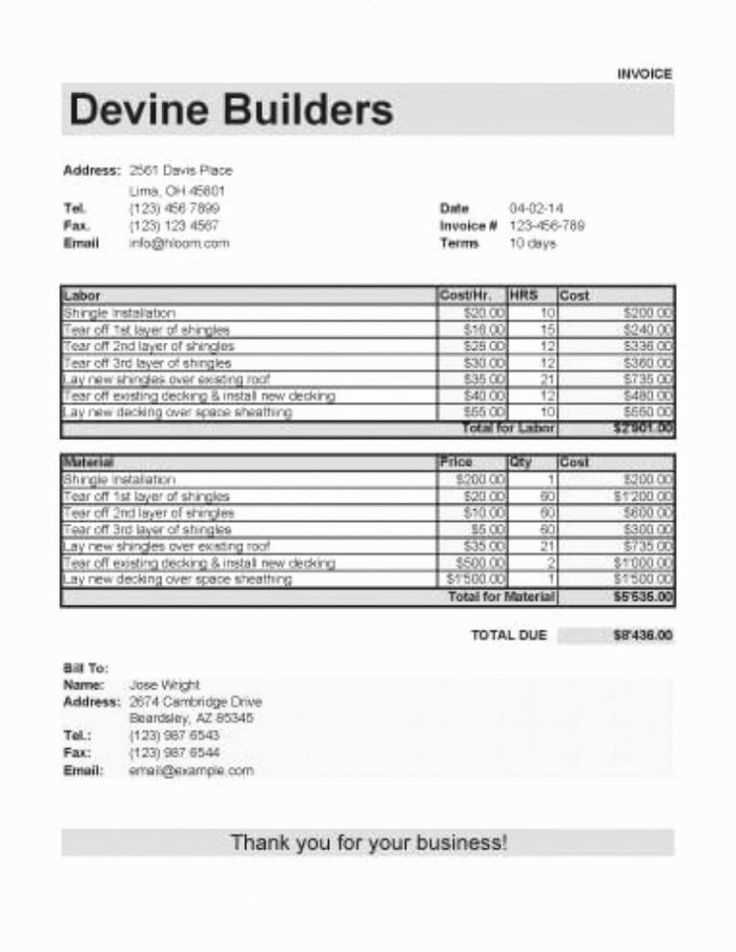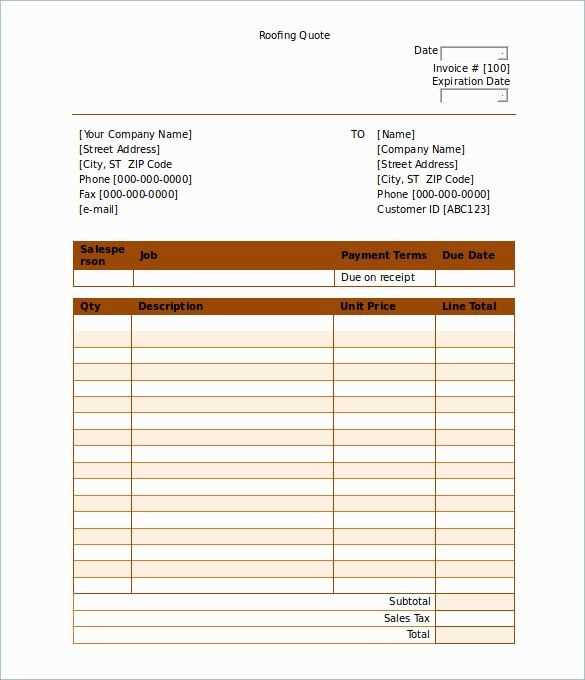
Creating a roofing receipt template is a practical way to streamline billing and ensure consistency in your work. A well-structured receipt not only helps you maintain clear records, but it also adds a professional touch for your clients. Below are key tips and components you should include in your roofing receipt templates.
Key Components of a Roofing Receipt
A roofing receipt should cover the following essential elements to be both accurate and complete:
- Contractor Information: Always include your name, business name, contact information, and license number if applicable.
- Client Information: Include the client’s full name, address, and contact information.
- Service Description: List all services performed, including specific materials used, labor provided, and any additional services such as inspections or clean-ups.
- Dates: Include the start and completion dates of the roofing work.
- Payment Details: Specify the total amount due, any deposits paid, and the remaining balance if applicable.
- Warranty Information: Clearly state any warranties provided for the materials or labor.
Design Tips for Roofing Receipt Templates
A simple, clean layout ensures that your receipts are easy to read and understand. Here are some design tips:
- Use Clear Fonts: Avoid using too many different font styles. Stick to clear, readable fonts like Arial or Times New Roman.
- Include a Header: Your business name or logo at the top creates an immediate sense of professionalism.
- Maintain a Logical Order: Organize information logically to help clients follow the details of their transaction.
Customizable Roofing Receipt Template

Consider using a customizable template that you can adjust based on each job. Many online platforms offer free or paid templates that you can personalize with your business details, logos, and service descriptions. This option saves time and ensures consistency across all your receipts.
Why Use Roofing Receipt Templates?

Having a template makes the billing process quicker and reduces the chances of errors. It also ensures that all necessary details are included, which can help resolve disputes if they arise. Additionally, a well-organized receipt reflects positively on your professionalism and builds trust with clients.
Roofing Receipt Templates: A Practical Guide

Create clear, concise, and professional roofing receipt templates to simplify transactions. Start by including key details like the date, service description, client information, and total amount due. This ensures all parties have a clear understanding of the scope and cost of the work completed.
For customization, design templates that can be quickly adapted for various jobs, from minor repairs to full roof replacements. Include a section for both materials and labor costs, as well as payment methods accepted. Be sure to leave space for any warranties or guarantees provided with the service.
Stay organized by keeping receipts consistent in format. Use numbered receipt templates to track jobs sequentially, which aids in record-keeping and simplifies bookkeeping. Incorporate a section for job status or next steps if follow-up is required, ensuring all necessary follow-through is captured.


